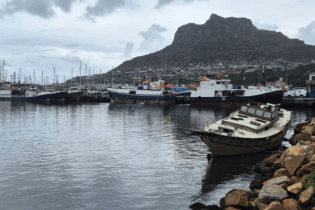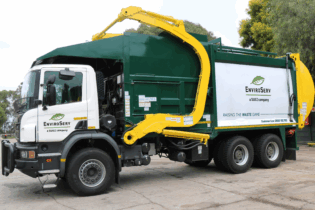Australia
Office of Water to investigate water saving ideas The New South Wales Office of Water has received 50 water saving ideas from communities within the Murray Darling Basin. The government wants to reduce the impact of water cuts under the Basin Plan. The state’s Water Commissioner, David Harriss says the submissions will now be reviewed to see how feasible they are for Commonwealth investment. “Pipelining open channels, irrigation or stock and domestic systems, to building infrastructure such as environmental water regulators that keep summer water out of wetlands, which would otherwise be dry. We have had novel ideas including sowing crystals into soils to better retain soil moisture, using evaporative air conditioners more effectively.”Meanwhile, Harriss says proponents of new dams in the state need to examine the long-term benefits of such infrastructure. His comments follow a recent decision by Griffith City Council to establish a committee to look at ways to reduce proposed water cuts, including the development of new dams. Harriss says while his office is not discounting dams, their real benefits need to be considered. “If you go back through the recent drought, those major dams in New South Wales spilt in 2000 but they didn’t spill until 2010. That meant that every bit of inflow was captured by the existing storages. So you have to ask yourself what benefit the dams had during those 10 years. And the answer is limited because all that water was being captured anyway.” Source: ABC News Canada Clean water tops Canadians’ environment concerns Few Canadians are concerned about global warming and the state of the world’s rainforests, according to a public opinion survey conducted exclusively for QMI Agency. “Canadians are more likely to worry about issues that can affect people in their day-to-day lives, like drinking water, air quality and the contamination of land,” says pollster David Coletto, president of Abacus Data.| Only 33% of survey respondents said they worry “a great deal” about global warming and rainforest loss, while 55% said they’re very concerned about pollution of drinking water. Just more than half of respondents said they’re also very worried about pollution of lakes and rivers generally. There are clear political differences too, with just 17% of those who voted Conservative in the 2011 election saying they worry about global warming. Among NDP supporters, concern was at 45%. “We see a huge gap between Quebec, where almost a majority are worried about global warming to a great extent, and Ontario, Alberta, and British Columbia, where the worry is not as great,” he says. Coletto says the numbers should alter the debate over oilsands development, which environmental activists have attacked because of its greenhouse gas emissions. |
According to insiders from the Ministry of Housing and Urban-Rural Development, the fundamental problem in maintaining water quality is the low level of funding.
Source: Chinadaily USA Gaza Fuel crisis impacts water and sanitation services in Gaza The current fuel crisis in Gaza, now in its fifth month, is causing extended power outages that severely disrupt the lives, health and livelihood of the region’s 1.6 million residents. It also severely affects the fuel-dependent fishing industry, already crippled by restricted access to Gaza’s fishing waters imposed by Israel’s blockade. The Gaza Power Plant produced electricity at less than 30% of capacity in April, causing severe disruption to basic services, including water, health and sanitation.Oxfam‘s partner, the Coastal Municipal Water Utility, says the situation is critical, with up to 40%of the 1.6 million population under blockade getting water in their houses only once every four days. The situation will get even more critical as summer approaches and demand for water escalates. Without regular supplies of fuel to run pumps, water and sewage facilities, including water wells, sewage pump stations, wastewater treatment plants, desalination units and water lifting stations remain vulnerable to collapse, leaving entire towns exposed to all the ensuing public health risks.
Source: IMEMC News United Kingdom Nano-based water treatment solutions Humans can’t survive without fresh, clean, drinking water, yet we sprang to life on a planet where 97.5% of water is useless to us. What’s left for us to drink is becoming polluted by agriculture, industry and poor water management. By 2030, 3.9 billion people (47% of the predicted population) won’t have access to clean water. There is a tiny solution to this large problem: nano materials can strip water of toxic metals and dangerous organic molecules, or turn salt water into fresh water. There are also plenty of other nanotech solutions in development.“Nanotechnologies that have the best chance are ones we can integrate into existing systems,” says Mamadou Diallo, an environmental engineer at the California Institute of Technology. That means, for example, membranes enhanced with nano particles that can slot seamlessly into water treatment plants. The Nametech project, which is co-funded by the European Commission and the University of Applied Sciences Northwestern Switzerland, is enhancing filters already used in water treatment plants with nanoparticles that do specific jobs.“We’re adding a wide range of nano particles,” says project manager Thomas Wintgens of the University of Applied Sciences Northwestern Switzerland in Muttenz. These include: • Biomagentite, an iron mineral, to get rid of chlorinated organic molecules and some toxic metals. • Silver to kill bacteria. • Nano particles of titanium dioxide to break down common organic contaminants such as hormones, pharmaceuticals, or manure – all they need to operate islight to shine on them when they are in the water. • Titanium dioxide, which is already widely used in paints and sunscreens so, in principle, the technology is cheap. Nametech is running a small pilot plant to test the membranes. Each 20cm module can process around a cubic metre of water every hour. But, like other new technologies, it needs to be proven beyond the lab. Rob Lammertink of the University of Twente, the Netherlands, says there is interest from industry for nanotechnology water treatments, but it is still early days. He heads the nanotechnology in water group of a large consortium, NanoNextNL, and predicts that, perhaps in five or 10 years, nanotech water treatments might be used on a large scale. Source: Infrastructure news and service delivery







